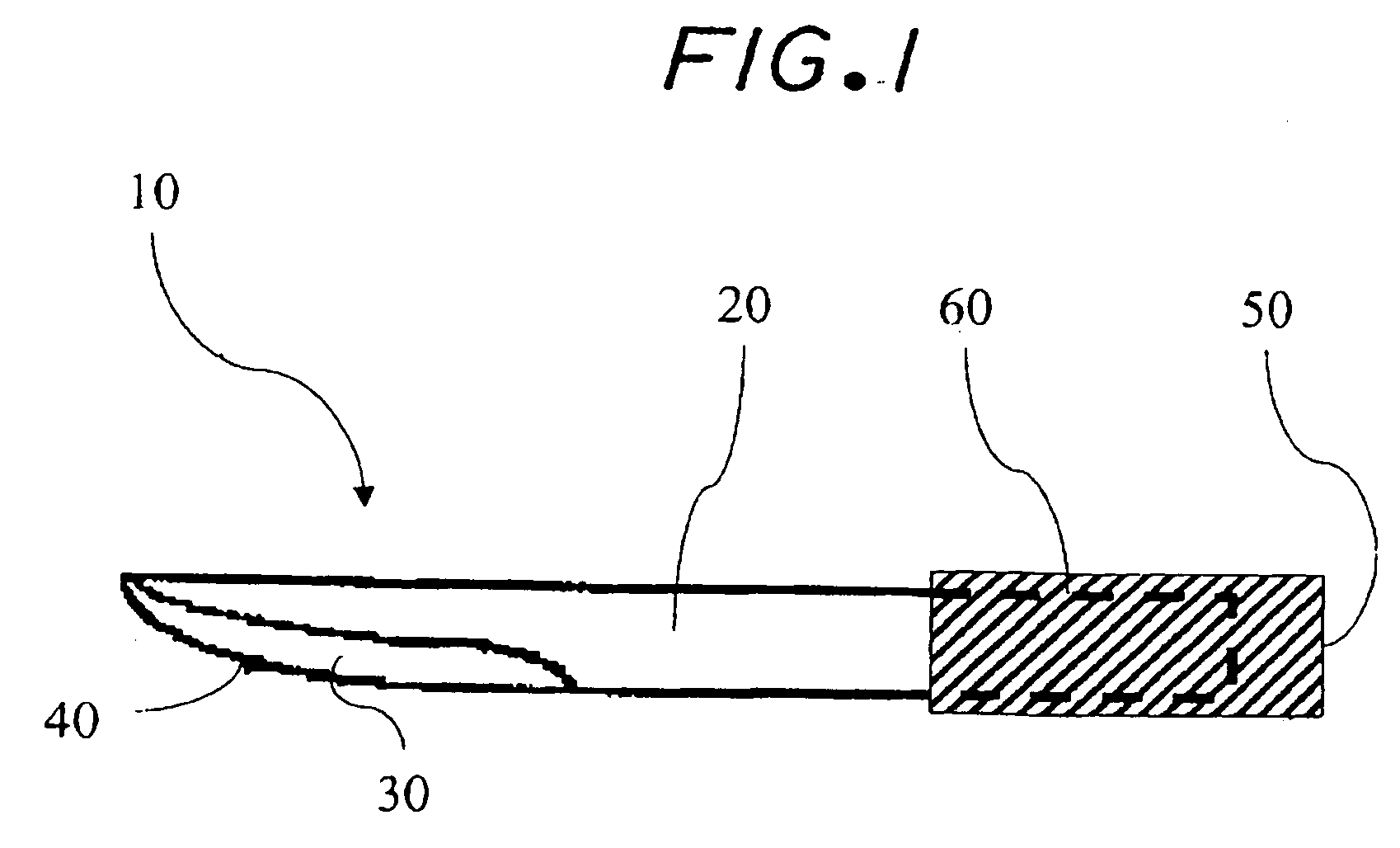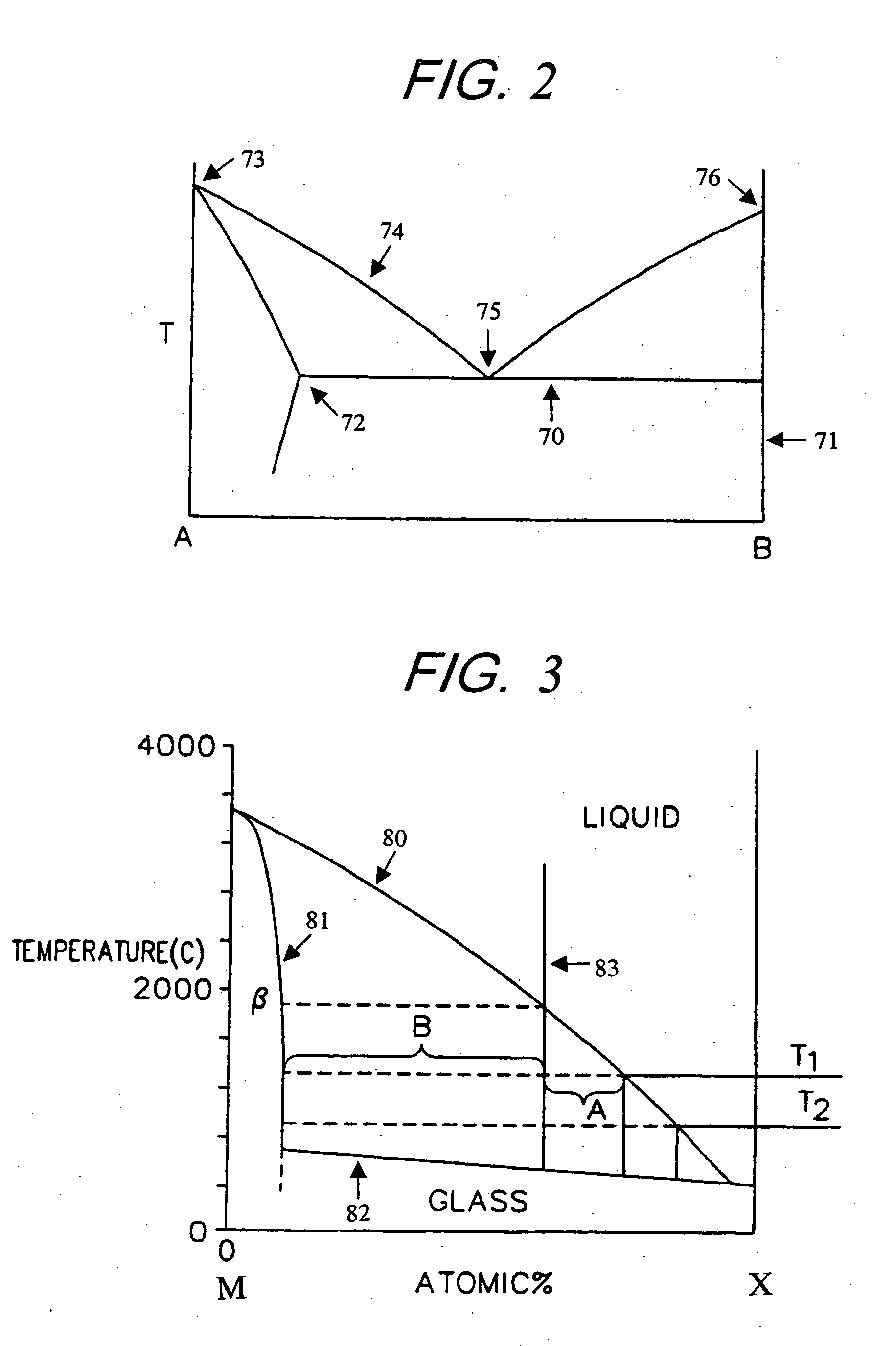Cutting tools made of an in situ composite of bulk-solidifying amorphous alloy
a technology of bulk solidification amorphous alloy and composite cutting tools, which is applied in the field of cutting tools, can solve the problems of loss of function and the tendency of cutting tools made from materials to return substantially to the original configuration, and achieves superior elastic limit, high yield strength, and high corrosion resistance.
- Summary
- Abstract
- Description
- Claims
- Application Information
AI Technical Summary
Benefits of technology
Problems solved by technology
Method used
Image
Examples
Embodiment Construction
[0023]The embodiments of the present invention described below are not intended to be exhaustive or to limit the invention to the precise forms disclosed in the following detailed description. Rather the embodiments are chosen and described so that others skilled in the art may appreciate and understand the principles and practices of the present invention.
[0024]The present invention is directed to cutting tools wherein at least a portion of the device is formed of an amorphous metal alloy forming a substantially continuous matrix with a second ductile metal phase embedded in the matrix and formed in situ in the matrix by crystallization from a molten alloy. One example of such a bulk-solidifying amorphous alloy, as it may be called, is a ductile metal reinforced bulk metallic glass matrix composite.
[0025]For purposes of illustration, FIG. 1 shows a representative cutting tool 10. In general, the cutting tool 10 has a body 20 and a blade 30. In such cutting tools, the blade 30 is de...
PUM
| Property | Measurement | Unit |
|---|---|---|
| Length | aaaaa | aaaaa |
| Length | aaaaa | aaaaa |
| Length | aaaaa | aaaaa |
Abstract
Description
Claims
Application Information
 Login to View More
Login to View More - R&D
- Intellectual Property
- Life Sciences
- Materials
- Tech Scout
- Unparalleled Data Quality
- Higher Quality Content
- 60% Fewer Hallucinations
Browse by: Latest US Patents, China's latest patents, Technical Efficacy Thesaurus, Application Domain, Technology Topic, Popular Technical Reports.
© 2025 PatSnap. All rights reserved.Legal|Privacy policy|Modern Slavery Act Transparency Statement|Sitemap|About US| Contact US: help@patsnap.com



